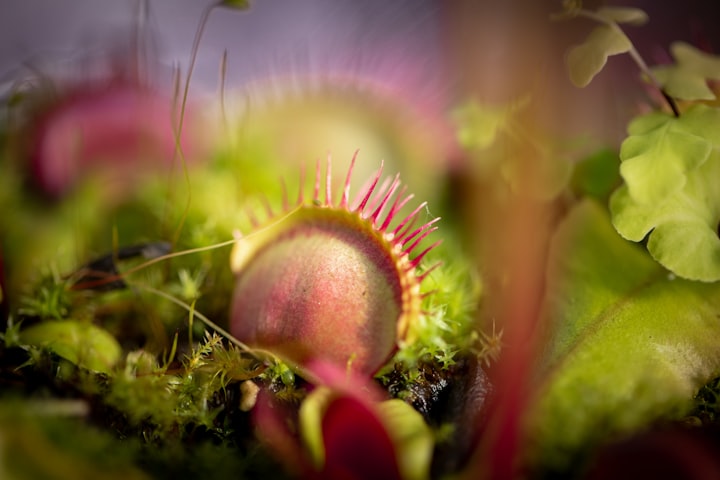
We all have heard our teachers speaking to us about the many ways life on the Earth moves. Among those ways, there was a world called carnivore that was fascinating – animals eating other animals to survive in the wilderness. It was fascinating indeed, and to the level that we would roar toward our mate, threaten them, in order to feel large. But, this world is unpredictable in its nerves and beauty. Where indeed there are animals pouncing over and ripping apart other animals, there also are plants that devour animals. It might seem like a fascinating scene from a movie, but it is true. And among the many animal-eating plants, one is the riveting Venus Flytrap. Let’s dive into its trap and understand its depth without being its food.
Venus Flytrap – an unearthly world
Imagine that one day your hair claw, green color, breathes life, and starts opening on its own, waiting for foolish prey. And as a fly comes and sits in its ferocious yet inviting jaws, it snaps and shuts down, thereby devouring its prey at last. Well, such is what Venus Flytrap is.
Also known as Dionaea muscipula, Venus Flytrap is a carnivorous plant that is native to the wetlands of the southeastern United States. It's unique in that it has modified leaves that can snap shut when triggered by a prey item, trapping it inside. You may think of its mechanism as somewhat similar to leghold traps. But how in the world does it invite its prey?
As they say, ‘sweet nectar you lay to call in your prey’, this plant works on the same principle. It produces a sweet-smelling nectar that attracts its prey, and the inside of the trap is lined with tiny hairs that sense when an insect or other small animal has entered. Once triggered, the trap closes shut, digesting the prey with enzymes produced by the plant.
The secret world of the Venus Flytrap is one of adaptation, innovation, and fierce competition. It doesn’t get a dream or hear a voice that there is prey so shut your flaps the hell up. No! If you have a flytrap in your garden, go to it, bow down, and look closer, very closer – you might see some tiny hair inside its leafy lobes. The moment a fly comes inside and triggers these hair, they send the message ‘hurry up. We’ve got our man’, and then it shuts down quickly. The trap is activated by the plant's cells releasing a hormone that causes the leaf to rapidly fold inward, creating a cage-like structure that traps the prey.
So, here you have it, the world of a carnivore plant that keeps on amazing generation after generation. Now, you sure might want to capture this rare beauty inside your camera. But how do you do it?
Photographing Venus Flytrap
Although the very name might make you think of this plant as a giant scare, it is a very tiny one. You may easily have this plant on your palm. So, photographing this requires some special skills and equipment.
- • The best time to photograph Venus Flytrap is during the early morning or late afternoon when the light is softer and more diffused. This will help to prevent harsh shadows and overexposure.
- • Use a macro lens to capture the intricate details of the Venus Flytrap. This lens allows you to get up close and personal with the plant and highlight its unique features. If you don’t have one, buy it from an eBay alternative where you may get cameras & photo accessories at a tiny price.
- • Now, get down low to see the plant from a different perspective and capture its intricate details.
- • Experiment from different angles to find the best composition. You can also experiment with different depths of field to create a soft or dramatic effect.
- • Use a tripod to stabilize the camera and prevent any blur caused by the camera shake.
- • And be patient. You may need to wait a while for the perfect moment to capture the shot, so don't rush the process.
So, here you have it, an in-depth peeking into the world of a tiny carnivorous beauty.
About the Creator
Shivam
Helping people communicate complex ideas using storytelling






Comments
There are no comments for this story
Be the first to respond and start the conversation.